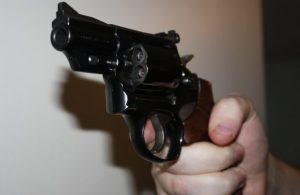Senior Editor
A Harvard Economics professor has released a new study that seems to deflate a popular opinion that racial bias is a factor in police shootings.
The New York Times broke the story, noting that the study by Prof. Roland G. Fryer Jr. “confirms that black men and women are treated differently in the hands of law enforcement” and that “They are more likely to be touched, handcuffed, pushed to the ground or pepper-sprayed by a police officer, even after accounting for how, where and when they encounter the police.’
But when it comes to police shootings, Fryer acknowledged to the newspaper that, “It is the most surprising result of my career.”
It was by no small coincidence that this report was released just days after the mass shooting of police officers In Dallas, Tex. That incident was apparently in retaliation for the fatal shootings of two African-American men – one in Minnesota and the other in Louisiana – by white police officers. Five Dallas officers were murdered including one who served with Dallas Area Rapid Transit, and several more were wounded.
The gunman was killed by a police bomb blast.
Equally ironic was the fact that the Dallas attack occurred during a Black Lives Matter protest march making its way through the downtown area not far from Dealey Plaza, where Lee Harvey Oswald assassinated President John F. Kennedy in November 1963.
According to the Fryer study, there are no “systematic datasets which include officer-involved shootings” and the newspaper acknowledged that “official statistics on police shootings are poor.” The newspaper added that even in cases where data exists, “the conditions under which officers decide to fire their weapons are deeply nuanced and complex.”
Translation: No two police-involved shootings are alike.
Fryer initially contacted 15 police agencies across the country, including some that were part of the Obama administration’s “Police Data Initiative.” The newspaper noted that the study didn’t say “whether the most egregious examples (of shootings) are free of racial bias.”
“Instead,” the newspaper reported, “it examined a much larger pool of shootings, including nonfatal ones. It focused on what happens when police encounters occur, not how often they happen. Racial differences in how often police-civilian interactions occur reflect greater structural problems in society.”
Fryer’s 63-page report did show some degree of bias in less-than-lethal encounters, including being detained and even handcuffed.
Whether this study will change anyone’s mind, or their perception, of police shootings remains to be seen. What does seem clear, however, is that one of the most oft-repeated assertions by the political left, that police are more inclined to shoot blacks than whites, does not appear well-founded.




